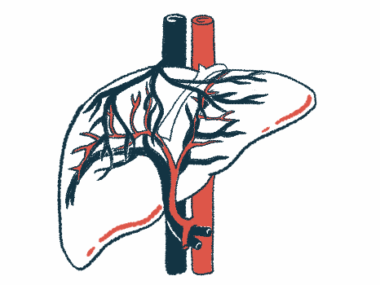American Liver Foundation funds 4 research projects in biliary atresia
Scientists will receive $50K for 1 year for early phases of their research
Written by |

The American Liver Foundation (ALF) has announced the eight winners of its 2024 Pilot Research Awards, with four of the awards going to scientist-led research projects focused on the rare liver disease biliary atresia (BA).
The remaining winning projects focus on primary sclerosis cholangitis (PSC) and autoimmune hepatitis (AIH), two other rare liver conditions.
The goal of the Pilot Research Awards program is to provide funding during early phases of innovative research projects that address outstanding questions related to these diseases and which have the potential to lead to groundbreaking progress in the field.
Awarded researchers will receive $50,000 in funding for one year to get such projects up and running. The idea is that this will enable scientists to collect the preliminary data that’s often required to get longer-term and larger funding amounts through the National Institutes of Health and other organizations.
Funding projects that ‘could lead to better treatment options or cures’
“We’re excited to fulfill our main goal through these research awards, which is to help fund innovative projects that address key outstanding questions in basic, translational, or clinical research, and fill gaps in the understanding of PSC, AIH, or BA that could lead to better treatment options or cures for these rare diseases that notably affect infants and children,” Helene Jordan, PhD, national senior director, research program management at ALF, said in a foundation press release.
In BA, the ducts that carry the digestive fluid bile from the liver to the intestines are blocked or absent, leading to cholestasis, or stalled bile flow, that causes serious liver damage if not addressed promptly.
The main treatment for BA is a surgery to restore bile flow, but it’s important that babies are diagnosed and undergo the procedure before too much liver damage accrues. If the liver becomes irreversibly scarred and damaged, known as cirrhosis, children are at risk for liver failure and the need for a transplant.
The awarded project of Sanjiv Harpavat, MD, PhD, of Texas Children’s Hospital and Baylor College of Medicine, is titled “Assessment of an Ultrasound Approach to Visualize the ‘Duct at the Hilum’ in Infants Undergoing Evaluation for Biliary Atresia.”
The project will test a new ultrasound approach that could help avoid delayed diagnoses in infants being evaluated for BA, thereby enabling them to get lifesaving treatment sooner. The four-step approach aims to visualize the “duct at hilum,” a part of the bile duct outside the liver that’s known to be abnormal in BA.
Previous research from Harpavat’s team showed the ultrasound method could identify BA. They’ll use the new funding to assess their method on a larger scale involving more healthcare sites.
A second project, titled “Molecular mechanisms of immune dysfunction in biliary atresia,” will be led by Krupa Mysore, MD, of Baylor College of Medicine.
Babies with BA who have cirrhosis and are awaiting a liver transplant are prone to serious and life-threatening infections. Mysore and colleagues previously found that some immune cells in the blood of children with BA don’t work normally, which could underlie that vulnerability.
She’ll now work to further understand this immune dysfunction and to identify genetic alterations in the livers of children with BA-related cirrhosis that might explain why circulating immune cells behave abnormally.
Goal of possibly identifying new therapeutic approaches
The other two awarded projects will study various mechanisms behind BA development, with the goal of possibly identifying new therapeutic approaches.
Natalia Nieto, PhD, of the University of Illinois at Chicago, will lead the project “Role of SPP1 in the pathogenesis of biliary atresia.” Secreted phosphoprotein 1 (SPP1), a protein with a role in several biological processes, including immune function, has been linked to BA. Nieto plans to examine further how exactly SPP1 is involved in the disease and whether it can be targeted therapeutically.
The final BA research project, titled “CRISPR/Cas9-based Chemogenomic Profiling to Map Gene-Environment Interactions underlying Biliary Atresia,” will be led by Xiao Zhao, MD, of Columbia University in New York.
Zhao and others previously identified a plant toxin that was responsible for outbreaks of BA occurring in newborn Australian livestock, suggesting that toxins from plants consumed by humans may also contribute to BA.
Now, the scientist will perform additional preclinical research to identify the genetic factors that might influence how the body responds to the toxin to cause BA. Zhao believes that could ultimately pave the way for identifying new therapeutic strategies.
Three of the remaining funded projects will be focused on PSC, while one is related to pediatric AIH.
“We need innovative research into these rare diseases that might not be funded elsewhere,” said Emmanuel Thomas, MD, PhD, of the University of Miami in Florida and ALF board chair. “It’s essential for us to understand how to treat these diseases, and how we can explore solutions that could help young patients living with liver disease.”








